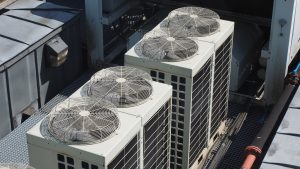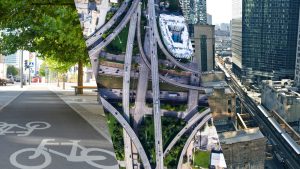A catchment refers to a location whereby the natural landscape allows water to be collected. Subsequently, the rainfall and runoff catchment leads it to flow downhill, joining freshwater bodies or becoming groundwater. Robust catchment solutions are built by building dams and weirs to utilise all the natural water that humans can get their hands on for drinking or other purposes. However, water utility asset managers have struggled to grapple with unforeseeable circumstances such as natural disasters. They have also struggled with maintaining their assets, leading to losing clean water or being contaminated with pollutants. With the development of technology, water asset managers have implemented or are considering integrating industry 4.0 technology to build robust catchment systems. This infusion of technological solutions is what is known as smart catchment 4.0. Therefore, technologies such as artificial intelligence (AI), machine learning (ML), digital twins, data analytical tools, and others have resulted in more reliable catchment systems. This article will discuss all the technologies asset managers should be aware of when incorporating new catchment solutions into their operations.
Six Mandatory Technologies That Should Be Present In A Smart Catchment 4.0 Solution
A range of technologies can be incorporated into a catchment solution. Rather than simply implementing any digital solution, consider which technologies are part of it. As a catchment solution is not the cheapest, invest in a solution that embodies a real smart catchment 4.0. Here are six technologies that asset managers should not miss out on:
Geographic Information System (GIS) Technology for Eagle Eye Vision of Catchment Areas
GIS is a unique technological tool that helps visualise assets in the water utility sector. Asset managers can thus receive first-hand information through asset monitoring and real-time tracking capabilities. The most significant advantage of this technology is that it can collect, visualise and monitor water and its assets of extensive geographical footprints. Hence, instead of implementing multiple software catchment solutions for each area, GIS technology saves the overall finances of the water utility sector by capturing it all at once.
GIS technology lets asset managers easily understand how the catchment systems work in the city by replicating a blueprint of a catchment. It acts as an interactive map and enables user-defined event-driven visualisation. This means a person can program the software to highlight critical assets such as natural disasters on the map. Integrating this information into the map gives a clear visualisation that will help asset managers to strategise and implement a contingency plan for such situations. In essence, GIS provides location-centric information about water networks that provides utilities to discover asset condition trends which no other reporting tool can discover.
Identical Virtual Replicas of Catchment Assets Enabled by Digital Twin Technology
Building a feasible catchment infrastructure is not an easy task. With the number of unpredictable events that could occur, asset managers find it hard to consistently rely on their catchment solutions to maintain their standards for a prolonged time. The time, resources and effort put into testing out the robust nature of the catchment can be eliminated with digital twins. Digital twins create a virtual replica of the catchment. By doing so, engineers and designers can test out various events or material that is most suitable. Whether testing out if the catchment solution can withstand natural disasters or which resources guarantee that water quality is maintained, digital twins help them understand what works best.
It is wrong to consider a digital twin as simply a virtual representation of a physical asset. In addition to making 3D representations of water assets, it can help them manipulate various models and monitor asset alignments and parameters. It moreover provides the ability to carry out simulation capacities whereby the quality of the catchment can be tested through hypothetical events to assess its durability and agility. It can easily adapt itself to a water asset management system and integrate all information it feeds on one platform. Gain hydraulic and other impactful parametric readings that influence the performance and conditions of assets with a single console.
Predictive and Prescriptive Analytics Tools That Showcase Impending Costs, Risks and Performance Changes
Like humans, the health of assets needs to be checked every once in a while. The drawback of not doing so will result in the asset breaking down and succumbing to catchment failures, thereby wasting clean water. This is why infusing predictive and prescriptive measures is an advantage. Both of these actively monitor an asset’s lifespan and pinpoint the root causes of future risks. It takes the extra step of providing an accurate data-driven duration of when such a failure may occur and enables asset managers to take measures before they happen. It integrates historical and current asset data to predict future outcomes and consistently updates its health condition. Through this, asset managers can schedule repairs based on the criticality of the asset condition. Therefore, this technology allows asset managers to prolong the asset’s life and eliminate random breakdowns.
Moreover, humans tend to schedule maintenance on a rotational basis. The issue with this is that it leads assets to be put into repairs when it is not needed, affecting the performance of the asset. The predictive and prescriptive analytics, however, can accurately inform the right time each asset will require repair. The detailed reports also provide suggestions and recommendations that can be implemented based on the financial ability of the utility service provider. In other words, the technology can offer unique solutions to any problem that supports the position of the water utility company.
Industrial Internet of Things (IIoT) To Interconnects All Devices, It Infrastructures and Stakeholders to One Systems
IIoT today is a mandatory technology solution used by asset-heavy industry practitioners. Hence, it is no surprise that this feature must be included in any smart catchment 4.0 solution. In order for predictive and prescriptive analytics to function correctly, IIoT sensors are incorporated. It is through the information that IIoT sensors collect that data analytics can perform accurately. In other words, some of these technologies depend on one another and cannot be regarded as stand-alone. This is a good indication of the vital role IIoT plays in providing critical insights about water management, water quality, building a strong catchment infrastructure and monitoring its health.
The wastewater industry implements different types of IIoT sensors around water assets for different purposes. Hence, each sensor is specialised to monitor a specialised aspect of the asset, which no other basic sensor system would generally include. By tracking every function carried out, a solution that includes IIoT ensures that no energy is wasted when they carry out their tasks. Even in the most dynamic water delivery events, IIoT can efficiently function to analyse and provide valuable insights on catchment solutions. Hence, water utility specialists will be equipped with data-driven information to make smarter decisions. From detecting water leak detection and prediction to ensuring transparency in investing, profiling the number of ways IIoT contributes to the smart catchment 4.0 solution is endless.
AI-Driven Algae Detection Tools for Healthier Catchment Water Bodies
Water managers need to be careful when it comes to catchment solutions to ensure the water is suitable for human purposes. This means the water should be safe and uphold quality at all times. Harmful algae that discolour water and release toxins are hard to eliminate once they enter the catchment system. Hence, algae detection technology is crucial in water system management.
Predictive Algae Detection Technology can monitor algal blooms and predict the algae levels using non-contact methodologies. IIoT sensors or satellite data analytics in this regard are helpful. Artificial Intelligence (AI) can also be integrated to monitor algae-centred parameters through the visualised dashboard. This can instantly help water specialists reduce algae rates from clean water with prompt action and ensure the quality and quantity of catchment solutions are not drastically affected.
Satellite Data Analytics To Help Implement Damage Control
Satellite technology is commonly used to forecast weather conditions. Imagine if that capability was integrated into the water industry. Any impending landslides, soil erosion, or floods can hence be detected in advance. Not only does this help the public sector to take measures to safeguard the public, but it also allows water managers to store water collected in the catchment for safety. It uses high-resolution images to detect any anomalies in the soil or the asset’s infrastructure. While this is by far one of the most advanced technologies that greatly benefit asset managers, it is not a technology honed by many in Australia yet. This technology works best for those incorporating remote sensing and 3D GIS models, providing a complete bird’s eye view of entire states or countries.
Gain comprehensive reports on areas spanning more than 30,000 kilometres. It additionally uses Landsat Data to detect and filter toxic algae blooms, monitor water stress, detect seasonal changes in water, pollution rates and more.
Unlock The Power of Smart Catchment 4.0
Smart catchment 4.0 solutions hold various innovative technologies which help water asset managers to make informed decisions. The ability to monitor water quality and its quality and take measures before an asset completely breaks down ensures that the overall public cost, resources and labour incurred into catchment systems are not wasted. Receive accurate readings and consistently maintain all standards with a smart catchment 4.0 solution provided by a reputed vendor.







